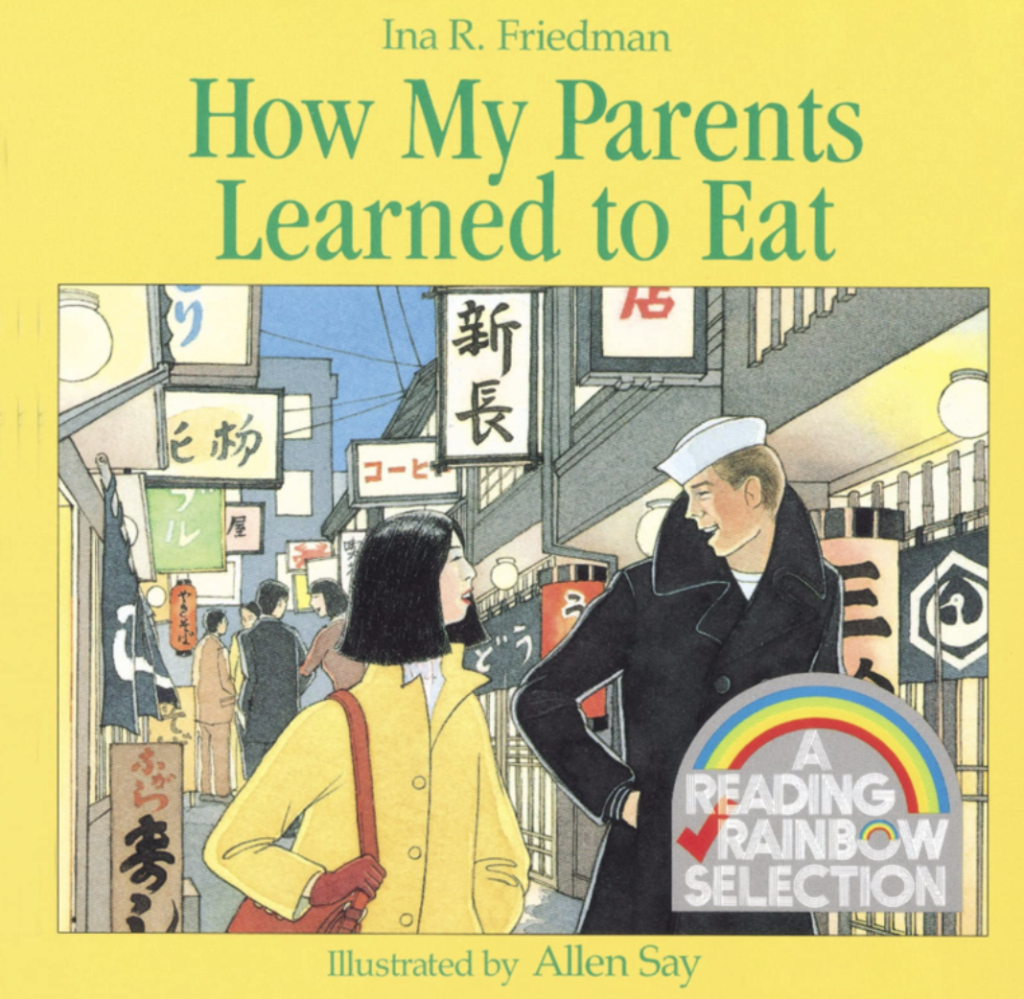We recently came across this charming book, “How My Parents Learned to Eat,” as part of our cultural homeschool studies. I immediately thought of it as a great introduction to many things, including sex education!
The story revolves around a Japanese schoolgirl meeting an American sailor, and the budding romance that results (from the author’s perspective, who is their daughter writing many years later). However, it’s written for young children with delightful pictures and a dilemma I can well relate to – how does one learn to eat with chopsticks / with a knife and fork?
If we go to a restaurant, he thought, I’ll go hungry because I don’t know how to eat with chopsticks. And if I go hungry, I’ll act like a bear. Then Aiko won’t like me. I’d better not ask her to dinner.
My mother wondered why my father never invited her to dinner. Perhaps John is afraid I don’t know how to eat with a knife and fork and I’ll look silly, she thought. Maybe it is best if he doesn’t invite me to dinner.
So they walked and talked and never ate a bowl of rice or a piece of bread together.”
“How My Parents Learned To Eat” by Ina Friedman
Oh, the suspense! Happily, though, it all comes beautifully right in the end…with a lot of yummy food being consumed in the process.

When I read this aloud to my kiddos, they were hanging on to every word – and wanted to hear this story again, and again, and again! Fortunately this was a book that I liked to read, so it was actually quite fun to go over. I had to laugh aloud in many places – such as when they compare “American” to “English” ways of eating, and some of the side comments about culture, and Western ways, and Asian ways!
Some of the points you may want to discuss with your children:
- Different expectations. The book does an excellent job of explaining how different cultures have different expectations, from pulling out chairs for women (something the Japanese girl learns from her Great Uncle) to bowing instead of shaking hands. What are some of the cultural expectations in your family, and where did they come from?
- Mutual respect and honor for each other. Both the American sailor and the Japanese schoolgirl show a delight to learn about each other’s culture and lifestyles. There is no discussion of one being the “right” or “wrong” way, just different. They also take time and effort to practice the new way of living and eating that the other person is teaching them. This translates well to their eventual relationship as husband and wife (in the future, of course)!
- The importance of communication. I love how the writer captures the “loves-me, loves-me-not” angst that accompanies many romantic relationships in ways that a child finds easy to understand! For example, both ponder why they haven’t eaten dinner together yet (is it because of something they did or said?), or the schoolgirl wonders why the sailor doesn’t call her one night when he has called her every other night (it is to learn how to eat with chopsticks, although she doesn’t know that). Both the American man and the Japanese woman learn how to speak with each other confidently, knowing that the other person loves them enough to hear anything they may have to say.
I hope this review gives you some fresh insights and inspiration in how to incorporate sex education with your children in a holistic, literature-focused approach. Let me know if there’s a specific resource you’d like me to review next!

1 comment